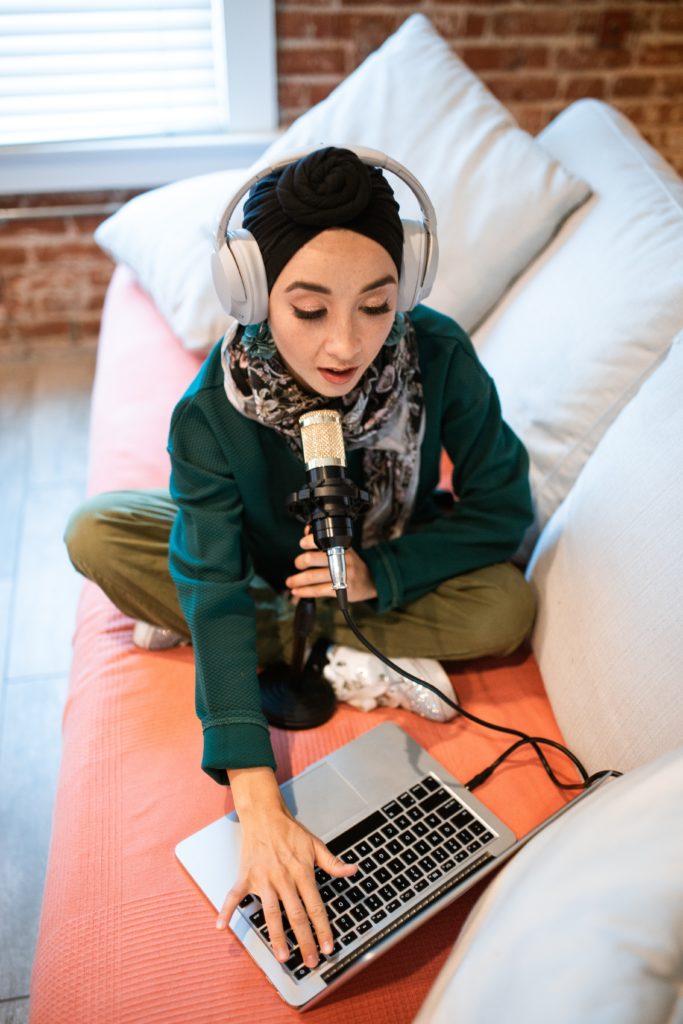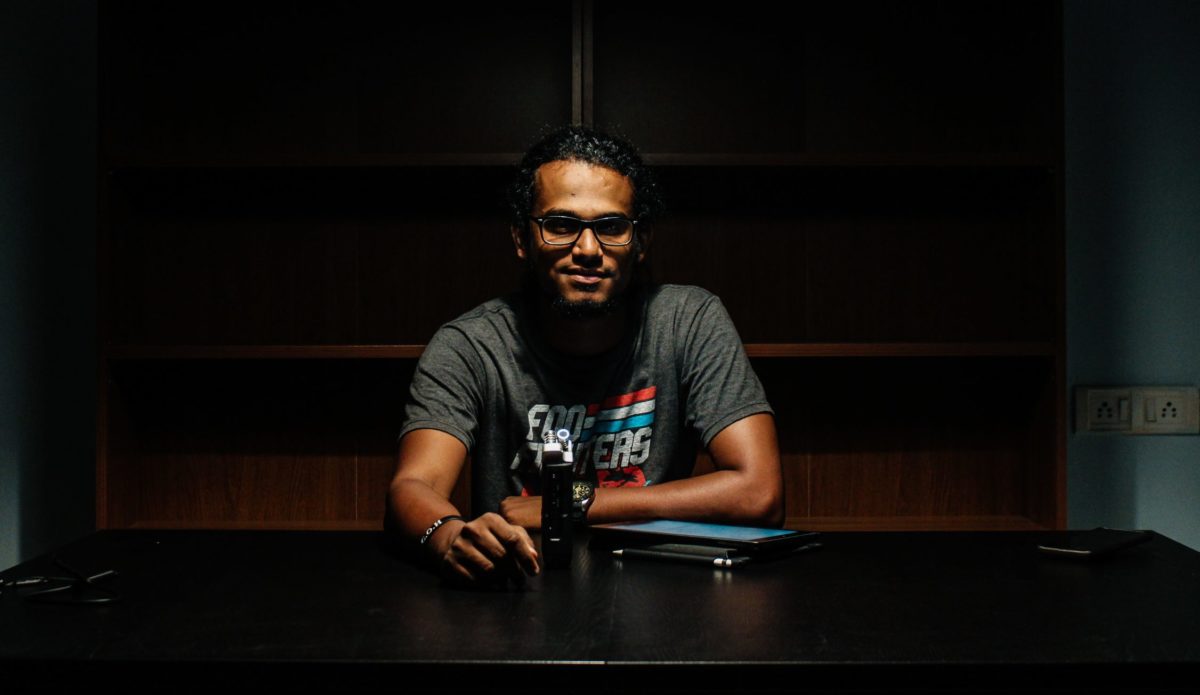Podcasting is the democratisation of audio. Radio stations and media companies, once gatekeepers of the airwaves, are now falling out of favour. Consumers have become less inclined to play a game of chance, tuning into the radio for any unknown mix of content, preferring to listen, on demand, to the exact thing that takes their fancy. And, given the perceived ease of entry into the podcasting space, it’s no surprise that an increasing number of consumers are setting their sights on becoming podcasters themselves. I say ‘perceived ease’ because, while it is available to everyone, there’s plenty you can get wrong.
The number of available podcasts has been steadily increasing for years, but the series of lockdowns and tiered restrictions across the world have made the boom into an explosion. As of December 2020, Apple Podcasts hosts 1.68 million podcasts, a huge increase from the 550,000 of 2018. Now I’m about to admit how sad my life is, but I’m so obsessed with podcasts that it’s not simply enough to work on them for my 9-5; I also follow multiple Facebook groups dedicated to podcasts, and have signed up to countless newsletters, and I trawl them night and day. It’s exciting to see first hand the sheer number of people who have decided to launch, during lockdowns, the podcast idea they’ve been sitting on for years.
Sounding out
But not all podcasts are created equally. As you might imagine, the quality of the production from Spotify’s Gimlet Media is going to dwarf that of the solo podcaster who are recording, mixing and publishing their podcast from a makeshift set-up in their bedroom. But it doesn’t have to be that way. Despite most podcasts and guest interviews needing to be recorded remotely at the moment, the lack of studio space and expensive kit shouldn’t mean poor quality shows.
Here are my tips for making any remote podcast sound professional:
- Get a good microphone… but not too good.
It might seem obvious, and it might be the first thing you come across when researching how to start a podcast, but a laptop mic [sic] just won’t cut it. Nor will the in-built mic on your Airpods. I use a Blue Yeti because it’s a USB microphone at a reasonable cost, that delivers crisp sound quality with absolutely no set-up required. The problem when you start paying for more expensive microphones, which often use XLR cables, is that you have to buy additional equipment if you want to run them through your laptop. Many XLR microphones need a pre-amp and mixer which can set you back hundreds of pounds. Obviously, if you’re looking for a full studio quality set-up and you have the dosh, then splash out for the whole kit and caboodle. All I’m saying is that it’s not essential. Also, make sure you grab a pop filter and/or a foam windscreen to help avoid ‘pops’. - Choose the room where you record carefully.
You need to find the smallest room in your house, with as many soft furnishings as possible. You can buy desktop sound-proofing shields, but their usefulness only goes so far. They will not do much to make up for an echoey room. If your house is low on soft furnishings, buy some – a rug, maybe a few cushions or pillows, and make sure to close your curtains during recording. All of this will help to deaden the echo, because excessive echo is a surefire way of making your podcast sound unprofessional. While you can add effects that deal with a bit of echo, there’s a limit to what they can correct. - Use software like Zencastr or Squadcast.
You can record your guest interviews over Zoom, and if you’re going to do that, make sure you’ve set it so that you’re recording a separate audio file for each participant — it’ll be easier in the edit. There’s also Skype of course, among others, but the problem with these is you have to battle both your internet connection and the guest’s. If either of you have a poor connection, you’re going to hear blips, beeps and drop-outs throughout the conversation, which make for difficult listening. Software like Zencastr and Squadcast record the files locally to each participant’s machine, so even if you hear drop-outs whilst you’re chatting, they won’t be heard in the final recording. - Record locally.
Even these pieces of software aren’t foolproof, so I’d recommend also recording your audio straight into your computer. The chances are that if you’re editing your own show, you have something like Audition or Audacity downloaded. Record your conversation into your editing software so you have it as a back-up. It’ll likely be even better quality than what you get through the web apps. It’s ideal if you can also ask your guest to do the same — they don’t even need a fancy bit of software. Most laptops have an in-built audio recorder (in Windows it’s called ‘Voice Recorder’) and that’ll do the job. - Check how your microphone sounds before recording.
You might think this is obvious but plenty of people don’t do it. It’s essential you do this before each interview. You might think you’ve not changed the settings on your PC but sometimes they change themselves! You’re listening out for ‘popping’, which is where your plosives come through too harshly on the recording. You’re checking you’re not recording too loudly as this creates a horrible fuzziness that you can’t edit around. You’re also checking that your laptop is still picking up your microphone — sometimes by default it switches back to your onboard laptop microphone, and if you don’t notice until after the recording is complete, you’re stuffed. Oh, and avoid placing your microphone on the same desk as your laptop, because often the whirring of the laptop fan will come up through the base of the microphone, and it sounds really annoying. - Consider other recording options.
Some guests don’t have a solid internet connection, some don’t have the right kind of computer or the technical chops to work with web apps like Zencastr, but there are plenty of alternatives.
Try connecting via a good old-fashioned telephone call, and ask them to have their mobile phone recording app running while you do it. If they place their phone on the table in front of them while you call them on the landline, you can have a perfectly good conversation without needing an internet connection, and the mobile will do the job of recording the quality audio. You can also consider a tape sync, where you ask someone to visit your guest with a microphone, to record the interview in quality while you chat to the guest on the phone. If you know someone in the area that’s happy to help out then you’re in luck, otherwise the going rate for a tape sync producer is about £50 per session.

- Send your guest a microphone.
This requires a little financial input but, if you really want a particular guest, and they have nothing by way of a good quality microphone, you might consider buying and sending them one. This microphone doesn’t have to be even near the quality of yours, you’re just trying to avoid having them use their laptop’s onboard microphone and speakers. For that reason, a headset is ideal — something cheap like the Sennheiser PC 7 USB Headset. - Finesse the edit.
Some people upload shows as if they were live, no editing. Do not be one of those people. Even if you don’t want to cut any content, you at least want to clean up the audio. You should be recording speakers on multiple tracks, so you can edit each person’s conversation separately. What often happens during remote recordings is you get feedback, bumps, coughs, microphone rattle and other random noises that appear in the ‘silent’ parts of the audio tracks. Cutting these noises makes a huge difference in the overall sound of the show.
You should also select theme music—sites like audioblocks.com do the job perfectly. And generally, don’t have too much ‘banter’ during the introduction, it’s best if you get to the content as soon as possible, and don’t feel the need to cut every breath, um and erm — it sounds highly unnatural if you do.
With all that being said, it’ll be very difficult to make a remote podcast indistinguishable from one recorded in a full, professional, studio environment, unless you’re willing to create your own home studio. But if there’s ever been a time when audiences are going to have sympathy for this slight reduction in quality, it’s now, while we’re all in lockdown together. And don’t let the fact that thousands of people are now starting a podcast dissuade you from launching your own — if it’s good enough, talent will out. Good luck with your show!

Oliver Guillou is a freelance podcast editor & producer and former BBC journalist and radio presenter. His current portfolio includes New Scientist’s suite of podcasts, Trees A Crowd, Behind The Spine and many more.

